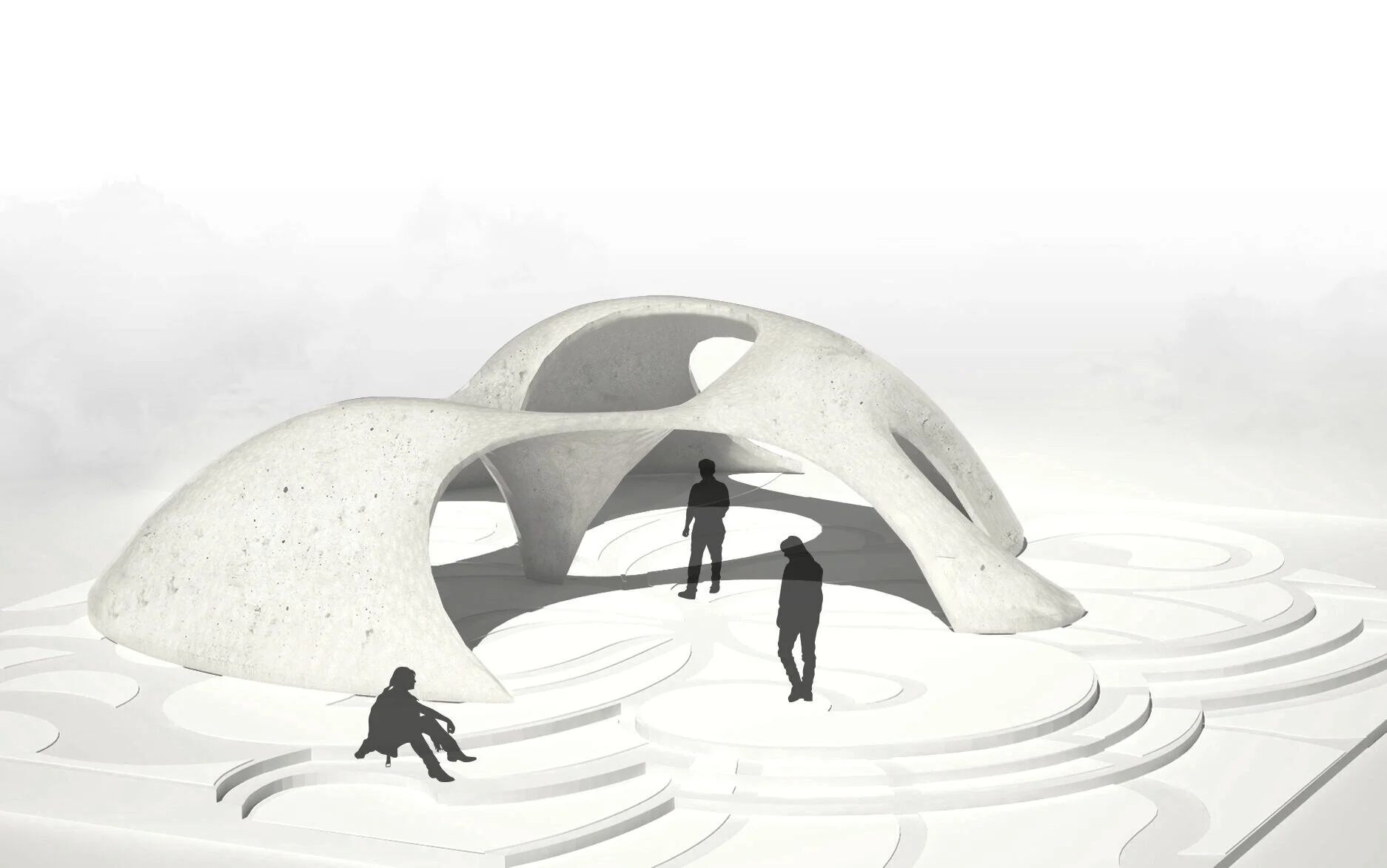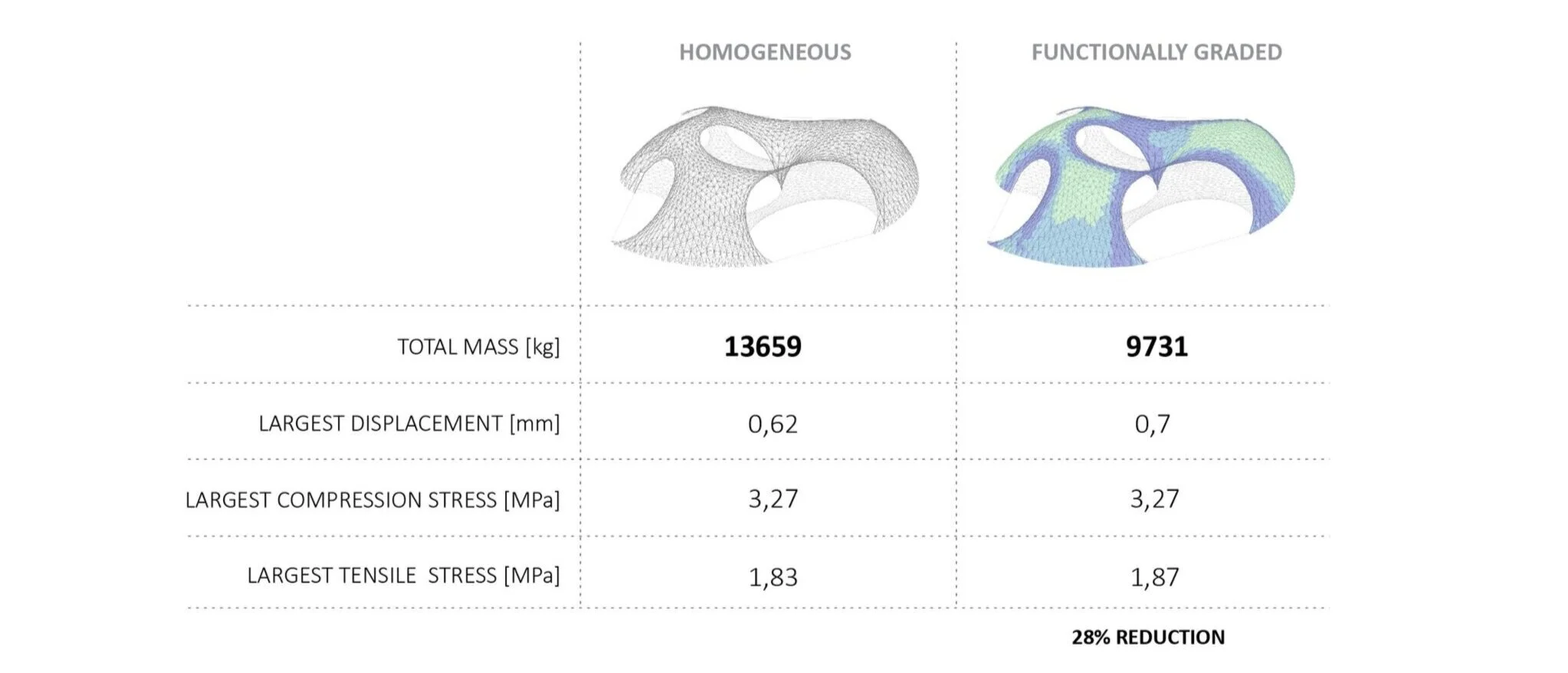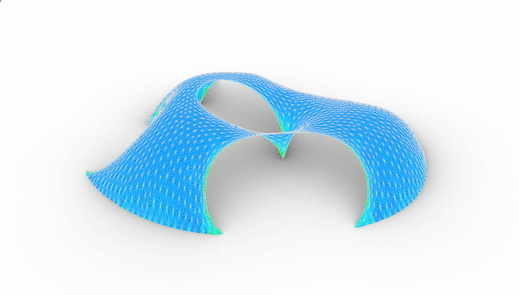Functionally Graded Concrete Shell
Year: 2018
Team: Eda Özdemir, Silvana Herrera, Okan Basnak, Ridvan Kahraman, Vaia Tsikou
Could a form found shape be further optimized by distributing material in accordance to the dominant stresses? This question grounded the basis of this project to better understand the interdependence of geometric, structural and material properties of a design solution. We chose to design and analyze a functionally graded concrete shell subjected primarily to compression to explore the limits of material savings in building construction using a homogeneous material such as concrete. Functional gradation, a characteristic of load bearing tissues of living organisms, is an integrated solution to minimize weight of building components by adjusting the mechanical properties of the material in accordance with structural requirements. Zones with high loads use high-strength materials, whereas areas under smaller loads can use porous materials with pore sizes and/ or densities adjusted to loading levels. The preliminary geometry was developed using RhinoVault plugin for Rhinoceros to find a geometry of a compression-only shell. The structural behavior was evaluated by visualizing the distribution of principal stresses. The resulting stress distribution from Karamba was used as the input parameter to determine the pattern of functional gradation. We are proposing to use the spraying technique, an automated process which introduces hollow concrete bodies in the mixture. We have established 3 types of concrete mixtures with varying densities. The structural behavior of both the continuous and the graded shell was analyzed to validate design assumptions and methods. The principle of functional gradation proved to be suitable when optimizing the structure. The analysis resulted in similar principal stresses as well as vertical deflection in both magnitude and distribution. We achieved a weight reduction of 28% which decreased the vertical reaction as expected.
For further information on the project please contact me!





